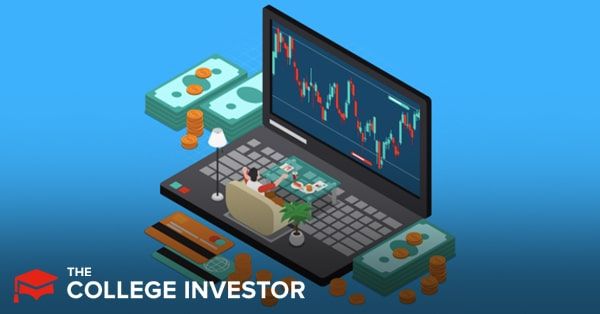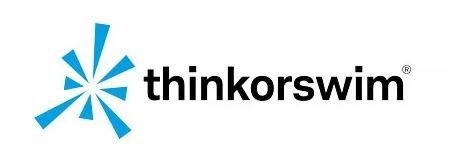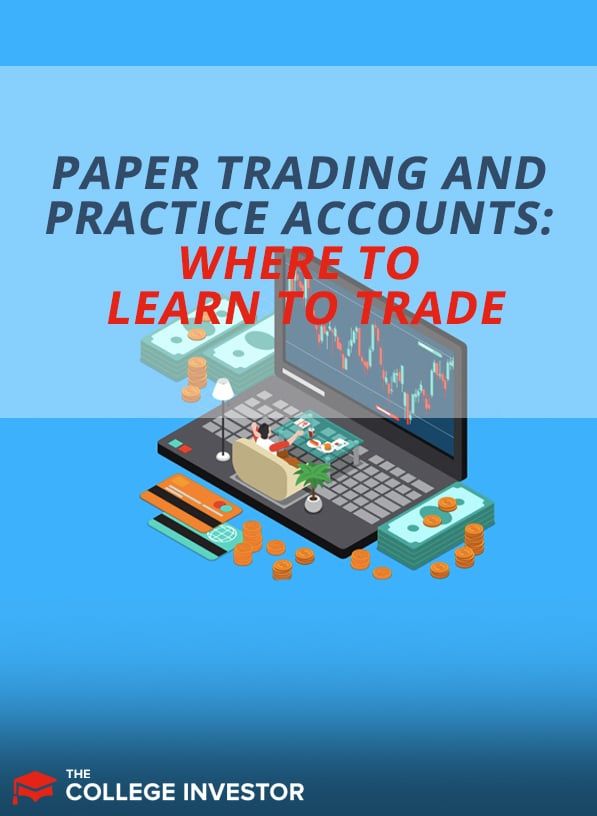
Paper trading in practice accounts (also called "simulated" or "virtual" accounts) allows you to trade stocks, options, and futures with virtual money. This serves several purposes.
The first benefit of paper trading is that it lets you get familiar with the broker’s trading platform before having to commit real money. Not all trading platforms are created equal. You'll want to make sure that you're satisfied with the mechanics of executing orders before you commit to a particular broker.
Another reason paper trading is offered is to give traders an opportunity to practice. Maybe you're completely new to trading and want to develop a profitable strategy. Or maybe you’ve been trading stocks and now want to try options or futures.
Whatever the reason, paper trading in practice accounts gives you the ability to enter and exit trades without risking real money. Keep reading to learn more about its benefits and limitations and to see where you can open a practice account today.
Getting Started
After signing up with an online broker, you’ll receive some fake money in your trading account. This is often $100,000, but could go up to $1 million. As you win or lose trades, you’ll see the account’s P/L (profit/loss) fluctuate, along with the total value of the account.
The simulated experience is very similar to real trading. The main idea is to simulate the real trading environment as much as possible. But, as we'll discuss later, a simulated environment is still not quite the same as the real thing.
Practice Accounts Routing And Fills
When put in an order for a trade, it must go to an exchange, where it is matched with another trader and executed. For example, if you're buying a stock, you need to be matched with a seller of the same stock. If you're selling stock, you’ll get matched with a buyer. The process of moving your order from your machine to the exchange is called "routing."
Of course, when you’re paper trading, nothing leaves the broker. There is no real order to route to an exchange. But with real trading, things can happen when routing your order. A critical machine might go down, preventing your order from reaching its destination. Lots of other orders might be in front of you, preventing your order from getting a good fill or any fill. This is especially true for paper trading options.
Routing issues that affect your trading are, admittedly, rare but not completely absent So while you might do very well with simulated trading, that might not be the case with real trading due to events that are outside of your control.
Paper Trading Vs. Real Trading Psychology
You might be surprised at how well you do when paper trading. Once you begin trading real money, however, things may change. When a trade goes against you even slightly, you’re immediately aware that real money is fleeing your account. And this can make it more difficult to keep emotion out of your trade decisions.
The speed at which you can lose big money on a trade greatly depends on the instrument that you’re trading. If you’re trading futures, which are highly leveraged, small movements in the price mean big changes in your P/L. Options trading is very similar.
For those types of instruments, try starting small once you decide to move from paper trading to live trading. For example, the S&P 500 emini has a micro emini. Instead of a $25 tick, it’s only $12.50. That’s half the price for each tick move. Fractional shares serve the same purpose for stocks.
Brokers That Offer Paper Trading
As mentioned earlier, nearly all brokers offer paper trading. The features sets are similar as well. Here’s what to expect from a few different brokers:
TradeStation
TradeStation is another desktop platform with a great feature set, including advanced orders. It makes it easy to trade an impressive array of asset types, including stocks, bonds, futures, future options, cryptocurrency, and even IPOs.
All account holders, including those with simulated trading accounts, get access to a large historical market databases to help you back-test trading strategies. They charge zero commissions on stocks, options, and futures and provide strong tech support as well.
Interactive Brokers (IBKR)
Interactive Brokers (IB) is advanced trading platform that is available worldwide. You can trade from their web, desktop, and mobile app. All of their practice accounts start with paper trading equity of at least $10,000
IB traders also get access to their proprietary IB SmartRouting system, which they say provides a share price improvement of $0.47 per 100 shares vs. the rest of the industry. Just be aware that some customer reviews indicate that IB falls short when it comes to tech support.
Take a free trial of IBKR GlobalTrader and gain instant access to $10,000 in simulated cash to trade in a simulated trading environment.

E*TRADE by Morgan Stanley
The web-based Power E*TRADE app is the platform of choice at E*TRADE. It allows for entering and exiting positions much faster than using the E*TRADE website. You can trade from their excellent mobile app too and great tech support is included. All paper trading account starts off with $100,000 in trading equity.
Tornado
Tornado is a great platform that allows you to learn how to trade with a paper trading account (and then a real account as well). Nvstr both allows you to paper trade, follow other investors, and optimize your existing portfolio.
Thinkorswim/Charles Schwab
The Charles Schwab ToS desktop platform probably has the richest trading feature set of any broker, including advanced orders. It has just about every charting and scanning tools that a trader could possibly want.
At first, it can be overwhelming. But getting to know this platform has its benefits. Your paper trading account starts off at $100,000. A mobile version of thinkorswim® is also available and excellent tech support is available.
Note: Charles Schwab acquired TD Ameritrade and migrated the Thinkorswim platform to Schwab.

Are Practice Accounts Worth It?
Paper trading with practice accounts has many benefits for beginners and seasoned vets. Beginners get to learn the basics of entering orders, managing positions, and exiting positions. And experienced traders can work on a new trading strategy without the worry of losing any money.
For vets, moving to a new broker with a different trading platform can present risks. But with paper trading, traders can try the platform in simulation mode first. And once they're familiar and happy with the platform, it’s time to go live!
Common Questions
Here are some common questions we see about paper trading and simulated stock market accounts:
What Is Paper Trading?
Paper trading is simulated trading or practice trading. It allows you to buy or sell stocks, options, ETFs, and more, without using actual cash. It's typically used to practice investing strategies before deploying them with real money.
How Long Should I Be Practicing Paper Trading?
It depends on how long it takes you to get comfortable with both your strategy and the platform you're using.
Can I Make Money Paper Trading?
In most cases, no. Paper trading means using simulated money to make trades. However, paper trading may be used for investing competitions, in which case there can be money made if there is a prize.
What Is The Best Paper Trading Site?
This all depends on your goals. We think the best paper trading site is the one that you're going to use when you start investing real money, since you'll be used to the experience.

Robert Farrington is America’s Millennial Money Expert® and America’s Student Loan Debt Expert™, and the founder of The College Investor, a personal finance site dedicated to helping millennials escape student loan debt to start investing and building wealth for the future. You can learn more about him on the About Page or on his personal site RobertFarrington.com.
He regularly writes about investing, student loan debt, and general personal finance topics geared toward anyone wanting to earn more, get out of debt, and start building wealth for the future.
He has been quoted in major publications, including the New York Times, Wall Street Journal, Washington Post, ABC, NBC, Today, and more. He is also a regular contributor to Forbes.
Editor: Clint Proctor Reviewed by: Ashley Barnett

